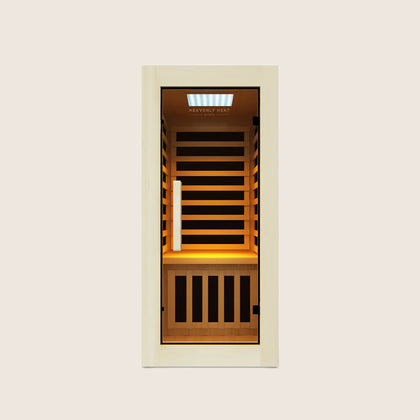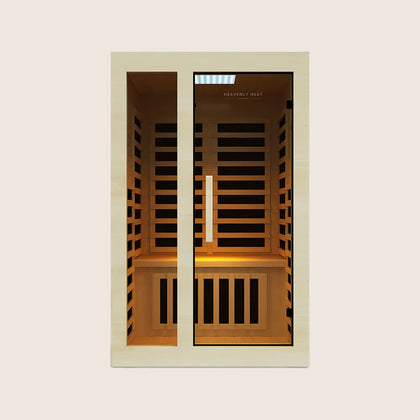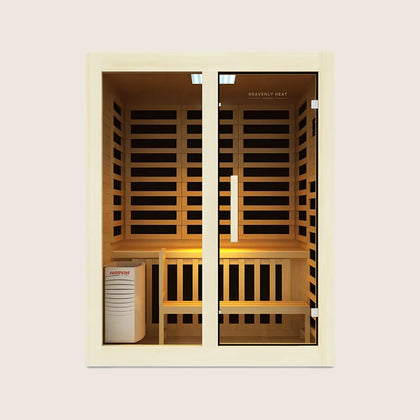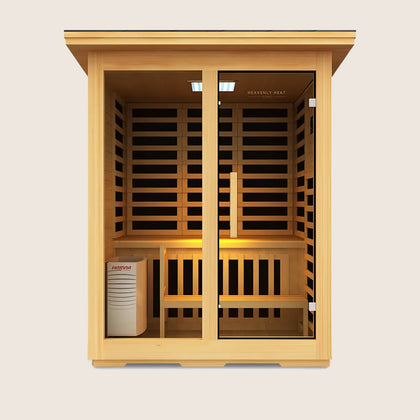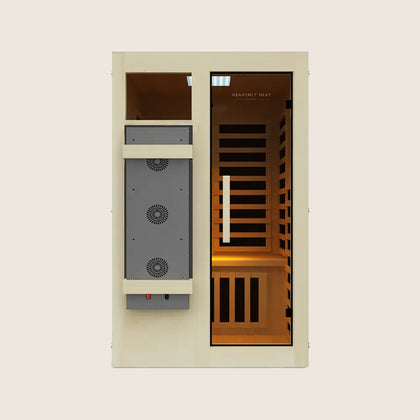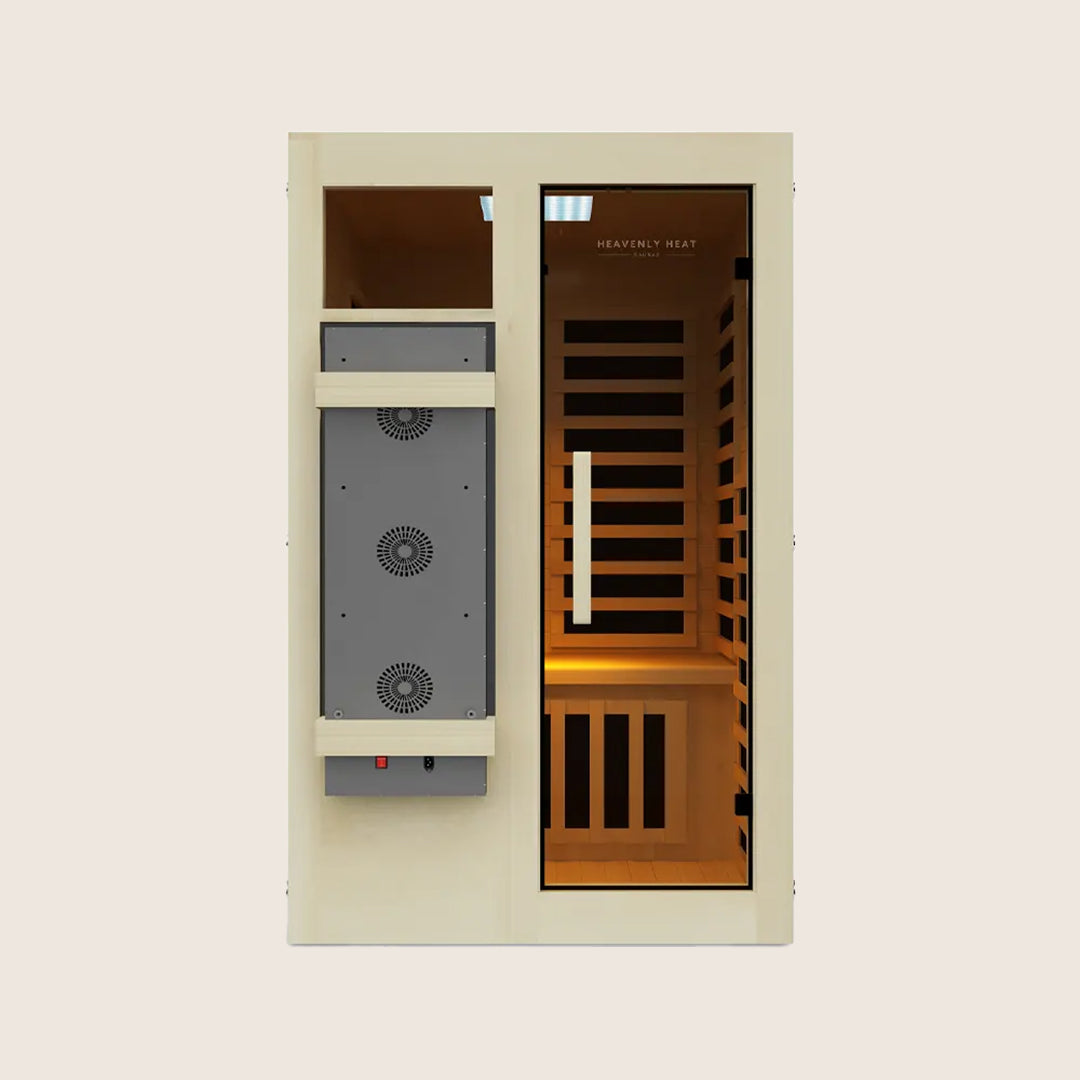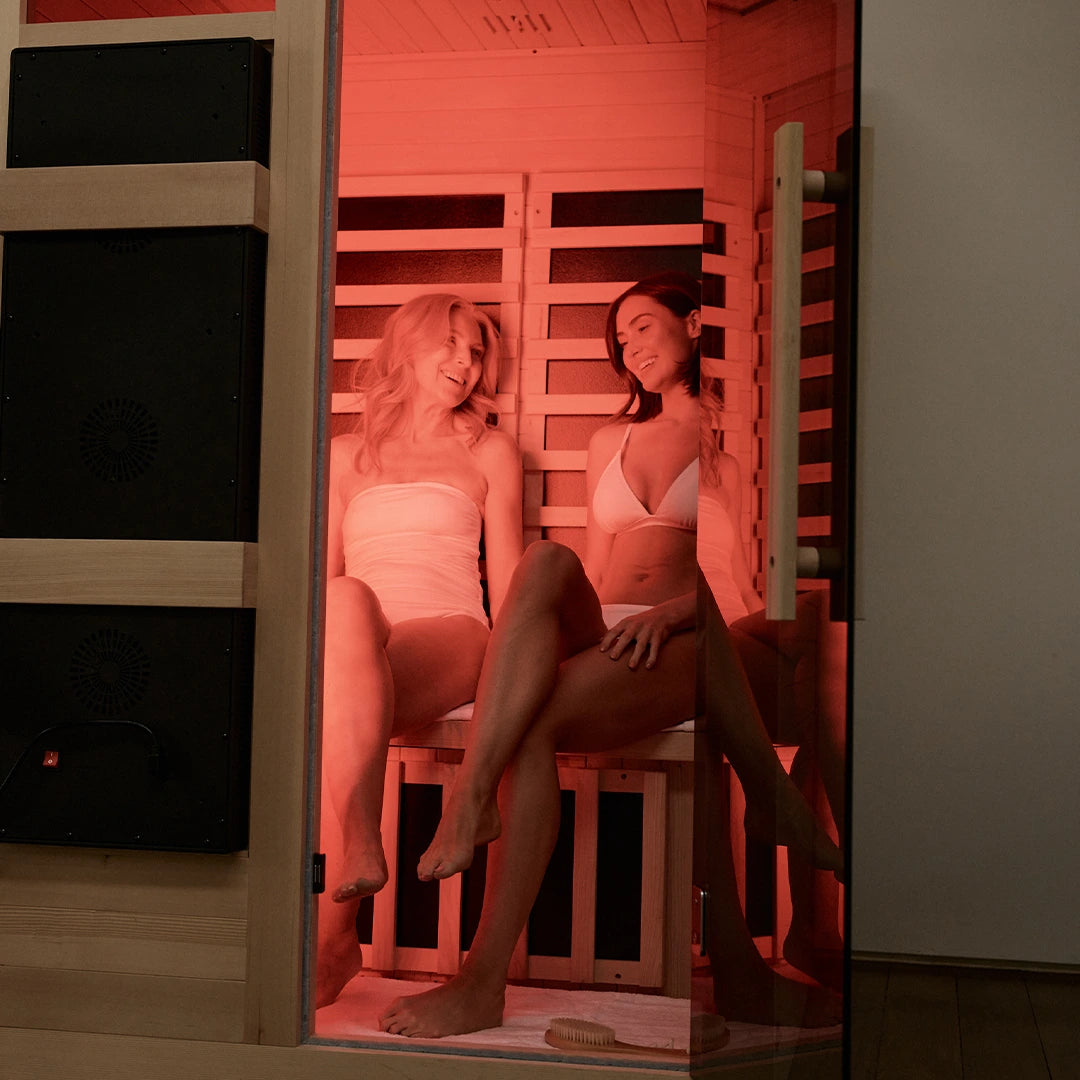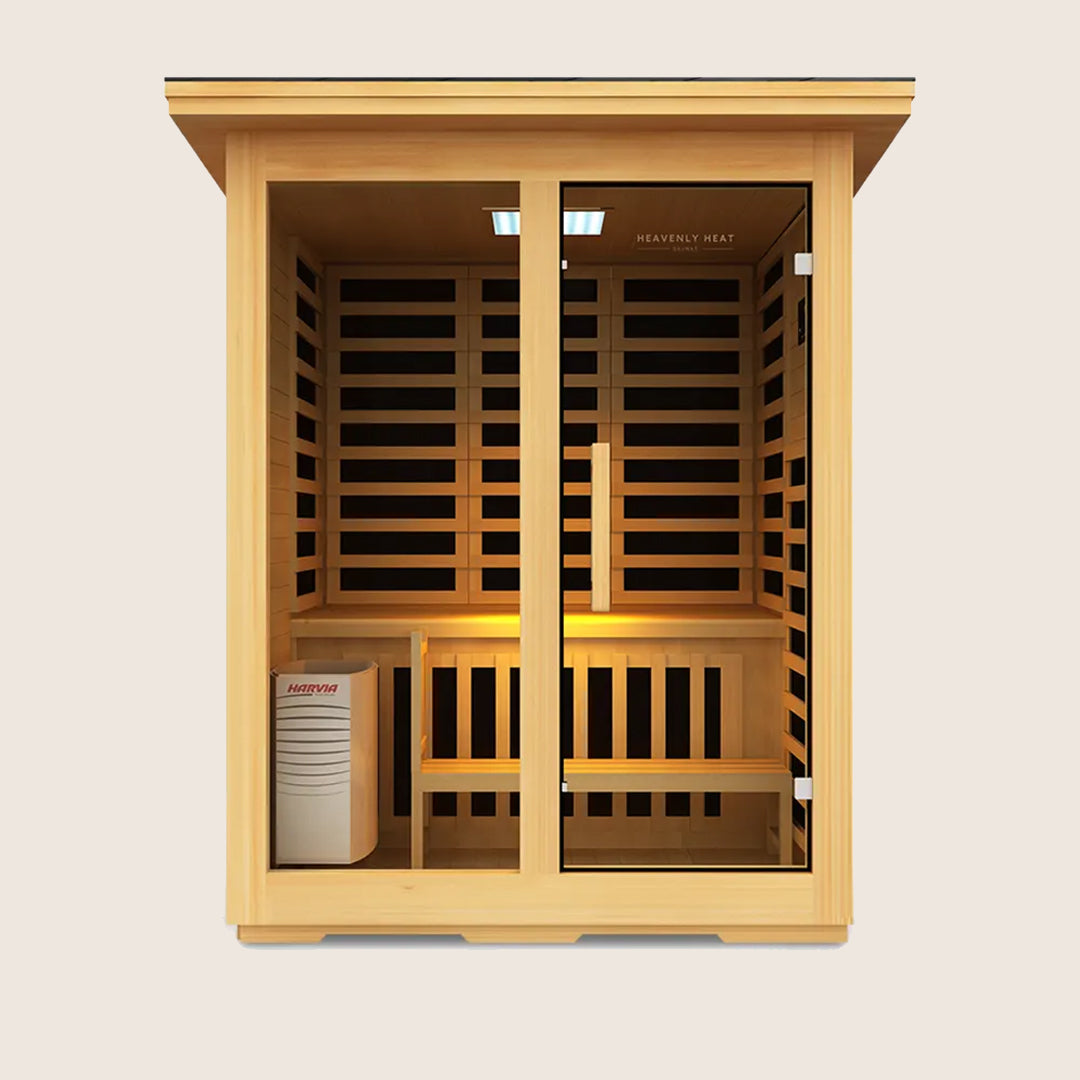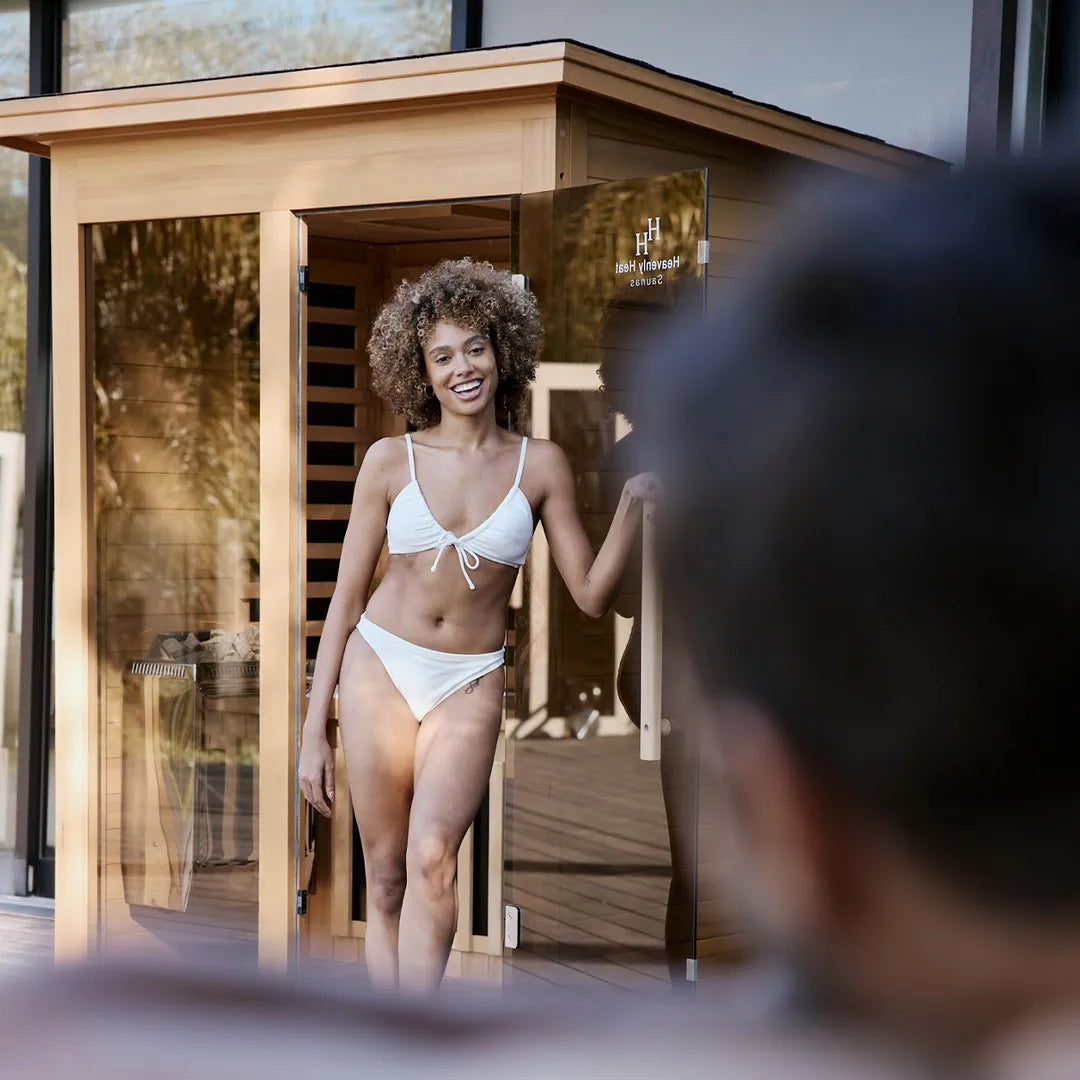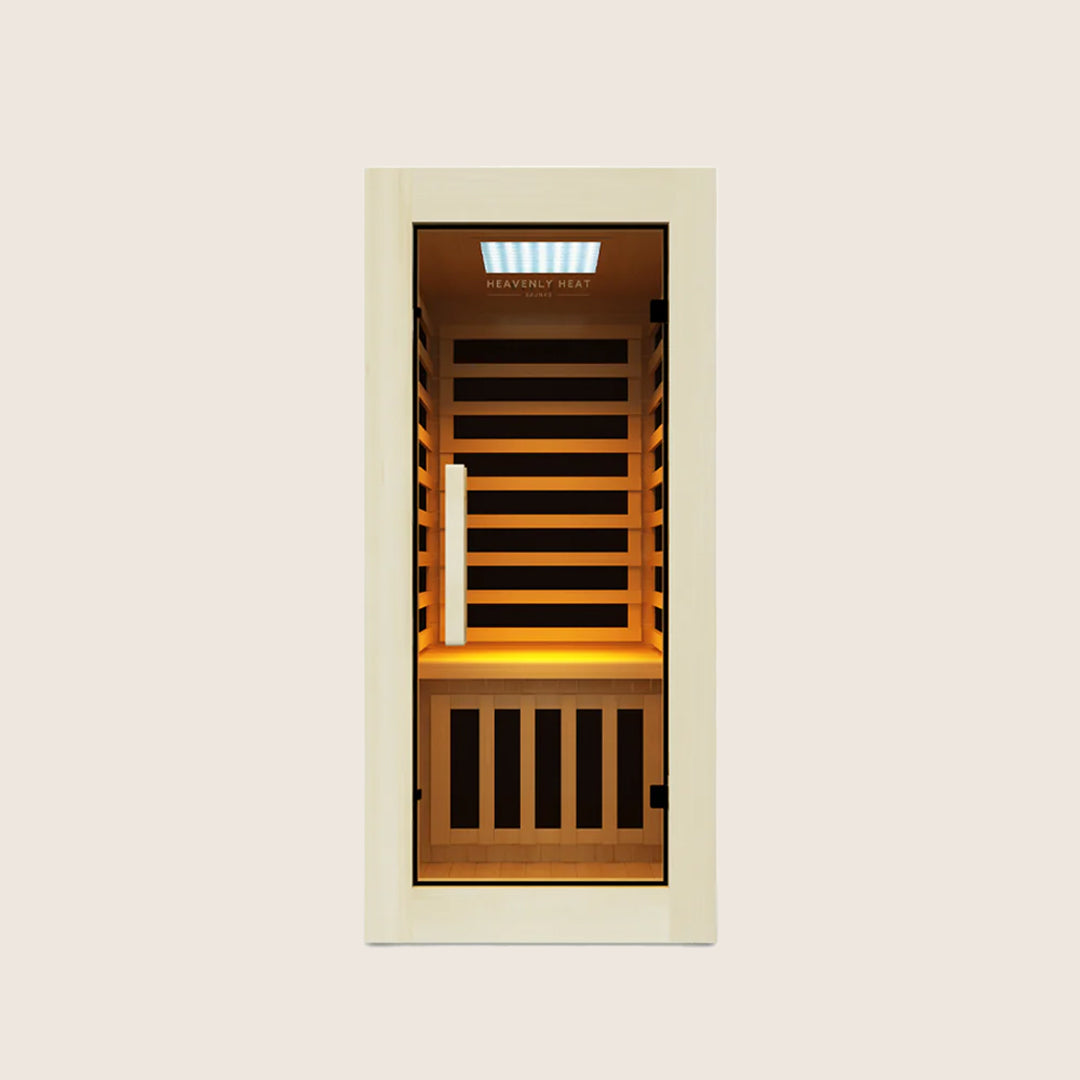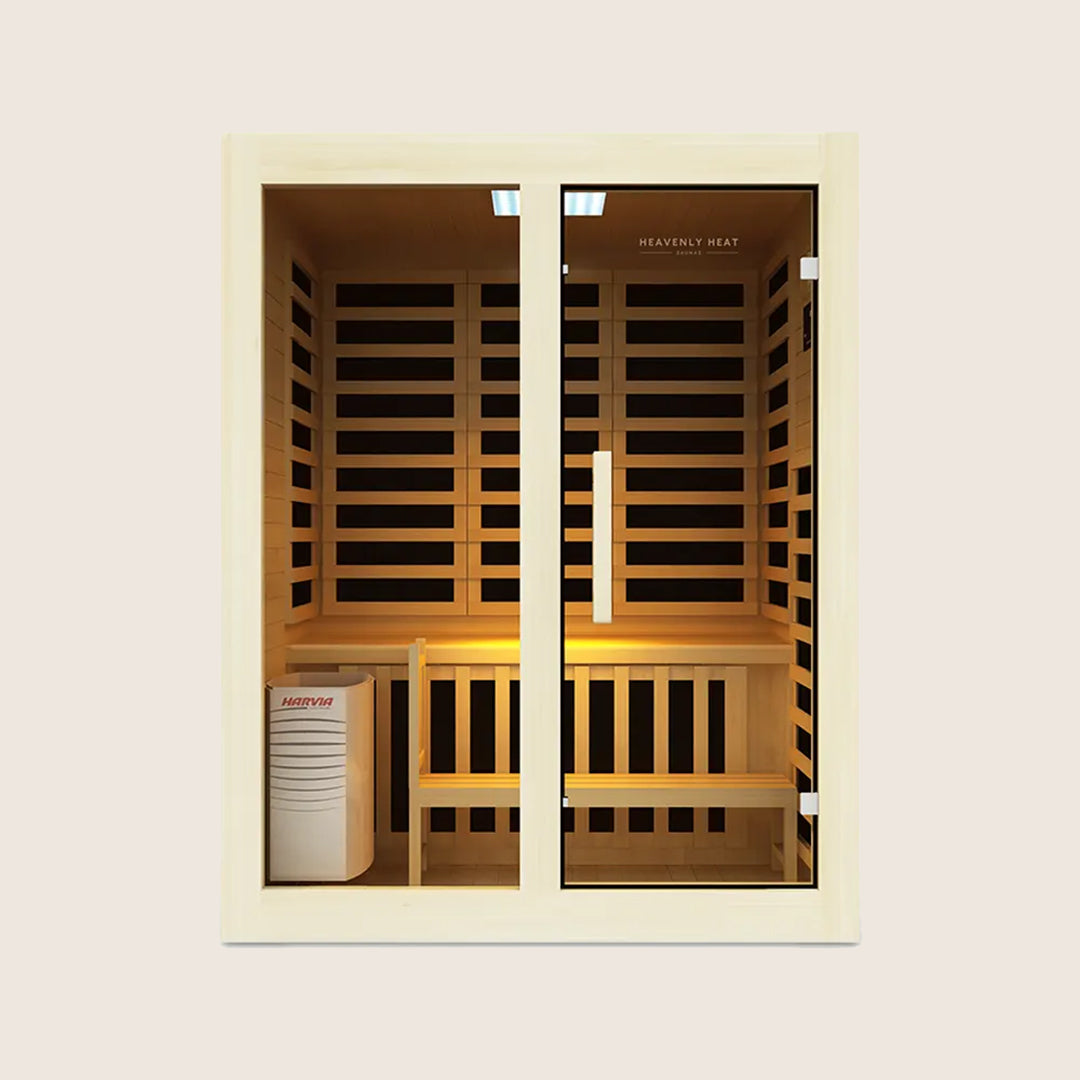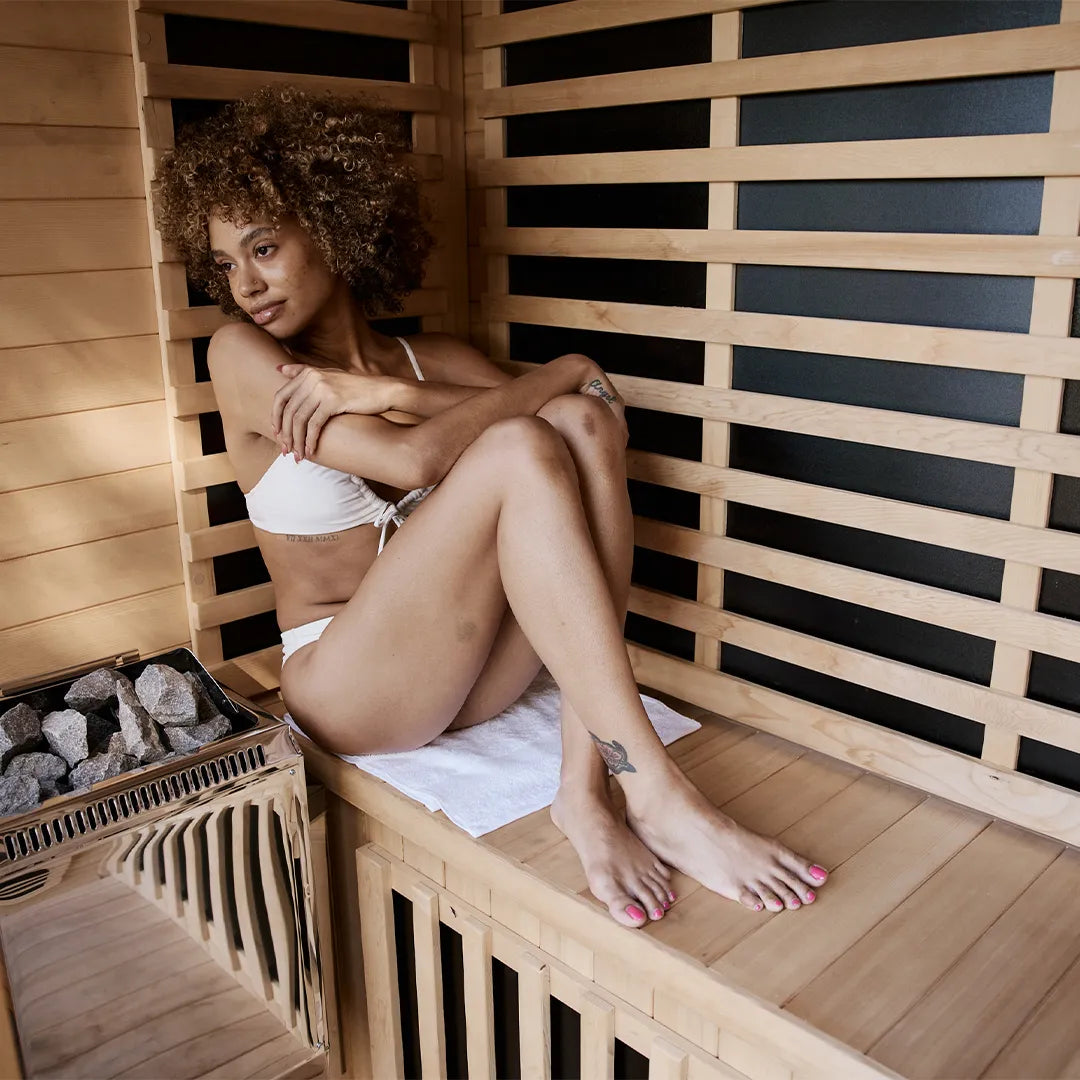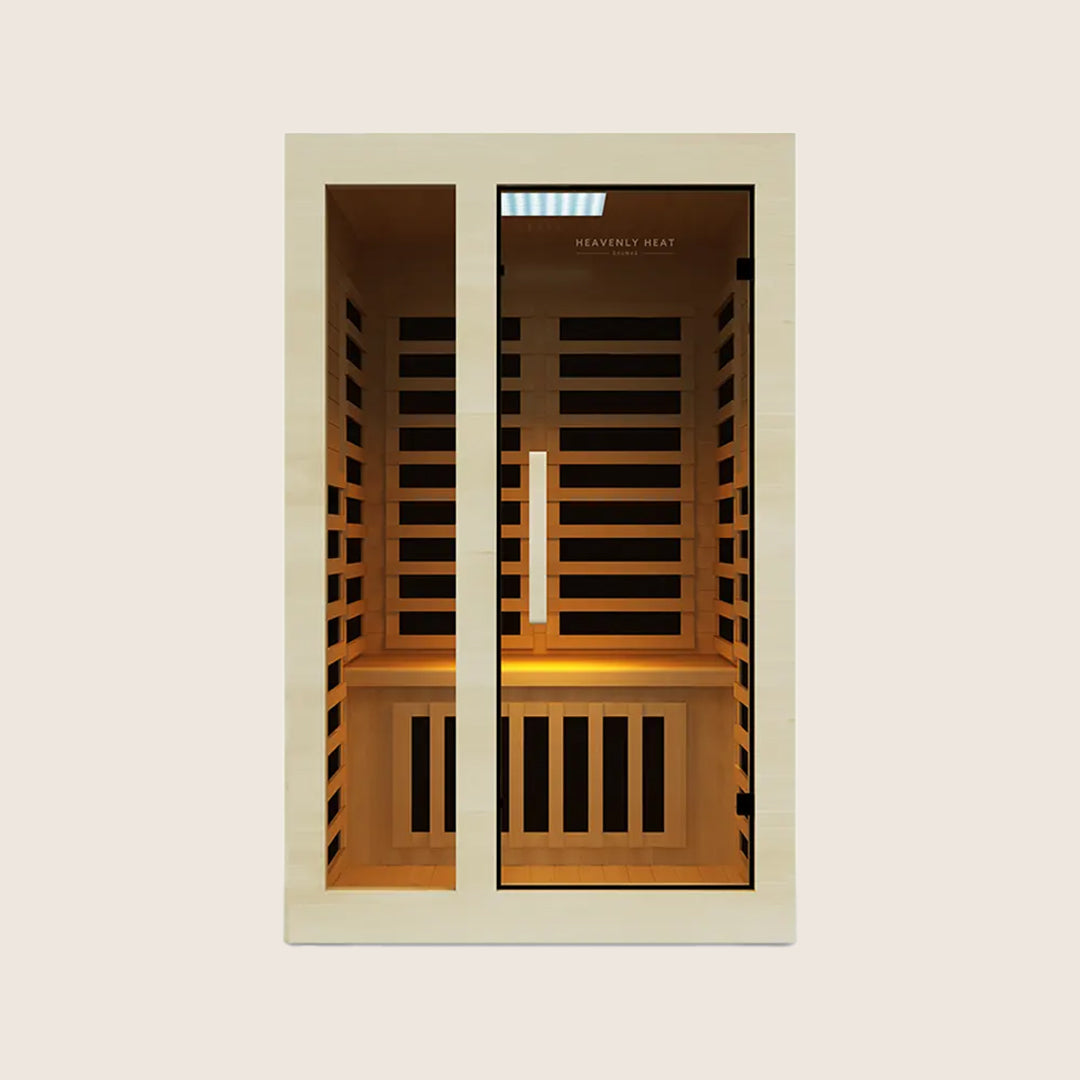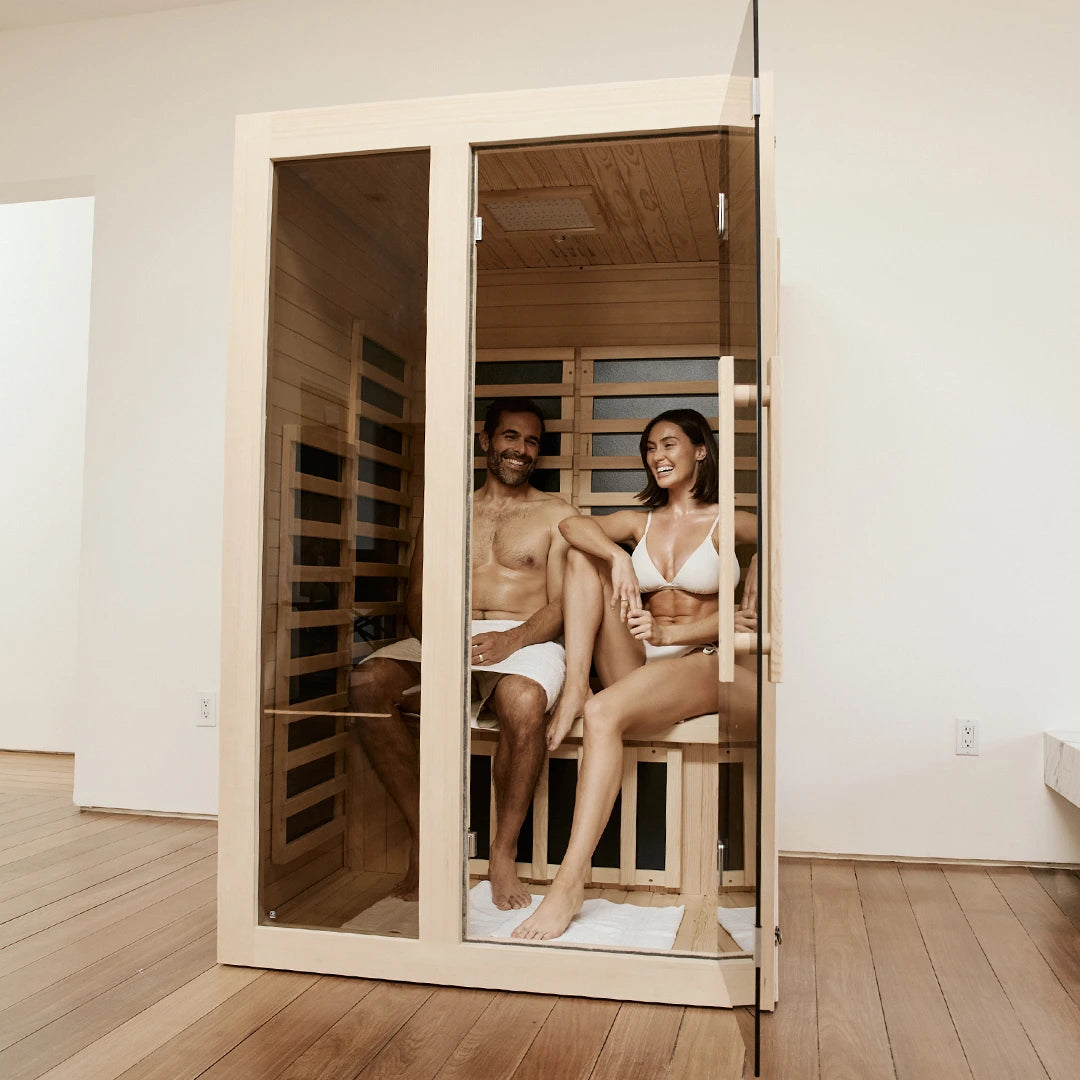Does Sauna Tighten Skin? Science and Myths Explained

Want firmer, healthier-looking skin without surgery? Saunas may help more than you think. By boosting circulation, stimulating collagen, and flushing out toxins, regular sauna sessions can make your skin feel tighter, smoother, and more vibrant.
In this article, we’ll separate the myths from the science and explore how heat can naturally support youthful skin.
Key Takeaways
Boost Collagen Naturally: Regular sauna use stimulates collagen and elastin, helping your skin stay firm and smooth.
Improve Circulation: Sauna heat increases blood flow, delivering nutrients and oxygen to your skin for a tighter, healthier look.
Detox and Hydrate: Sweating in the sauna removes toxins and supports moisture balance, enhancing skin tone and elasticity.
Combine Lifestyle Habits: Proper hydration, nutrient-rich diet, and exercise work with sauna benefits to maintain youthful, resilient skin.
Explore Non-Surgical Options: Treatments like RF, ultrasound, microneedling, and red light therapy can safely improve firmness without surgery.
The science behind sauna and skin health
Using a sauna regularly can do more than help you relax, it can actually improve your skin. A study in Dermatology looked at 41 healthy adults who used a Finnish sauna regularly.
People who spent time in the sauna had healthier skin: their skin held more moisture, recovered faster after heat exposure, and kept a better balance of natural oils and pH levels.
The study also found that regular sauna use helped regulate sweat and blood flow in the skin, almost like giving your skin a gentle workout.
Even small changes, like less oil on the forehead, showed that the skin adapts and becomes stronger over time.
These results suggest that regular sauna sessions can protect your skin and keep it looking healthy.
Does Sauna Tighten Skin?
Sauna can help tighten skin by boosting collagen and elastin production, improving blood circulation, reducing inflammation, and supporting hydration.
Sweating removes toxins and enhances skin tone, while heat slightly firms underlying muscles. Infrared saunas offer deeper benefits, and combining regular sessions with proper hydration, diet, exercise, and non-surgical treatments like RF, microneedling, or red light therapy maximizes skin firmness naturally.

Potential Benefits of Sauna for Skin Tightening
Sauna Heat Stimulates Collagen
When you sit in a sauna, the heat wakes up your skin cells called fibroblasts. These cells make collagen and elastin, which keep your skin firm and smooth.
A study in the Yonsei Medical Journal showed that infrared heat made fibroblasts produce more collagen and elastin.
After six months, people noticed their skin felt tighter and looked smoother. Regular sauna sessions may naturally help tighten your skin.
Increased Blood Flow
When you sit in a sauna, your blood starts flowing faster, carrying oxygen and nutrients straight to your skin.
This extra boost helps your skin cells work better and supports collagen, the protein that keeps your skin firm and bouncy.
Over time, this can make your skin look tighter and more elastic. Studies show that repeated sauna sessions train your body to handle heat, improving circulation and overall skin health.
According to Experimental Gerontology, this thermoregulatory response activates protective and cardiovascular mechanisms, which means your skin benefits as your body responds to the heat. Simply put, better blood flow can help your skin stay firmer and healthier.
Sweating in a Sauna Removes Toxins
Sweating in a sauna can help tighten your skin by flushing out toxins and boosting blood flow, which keeps your skin healthy and firm.
When you sit in the heat, your pores open and sweat carries away impurities and excess metals from your body.
A study in the International Journal of Environmental Research and Public Health looked at sweat from people in saunas and during exercise.
It found that sweating helps remove metals like nickel, lead, and copper, which may leave your skin looking fresher, healthier, and more toned over time.
Sauna Reduces Inflammation
When your skin gets inflamed, it loses elasticity and starts to sag because inflammation breaks down collagen.
Regular sauna sessions can calm that inflammation, helping your skin stay firmer and more resilient.
A study in Annals of Medicine found that men who used the sauna frequently had lower levels of inflammatory markers, showing that sauna use can actively support healthier, tighter skin over time.
Heat Improves Skin Hydration
Sauna heat improves skin hydration by increasing blood flow, which delivers water and nutrients to skin cells.
This boost in circulation helps the skin hold moisture more effectively. For people with dry skin, sauna sessions can support hydration by softening the outer layer and encouraging natural oil production.
Heat also improves elasticity, making skin look firmer and healthier. Some worry saunas may dehydrate the skin, but with proper hydration before and after, they actually support moisture balance.
Regular sauna use can strengthen the skin’s barrier, helping it stay hydrated while also promoting a tighter, more youthful appearance.
Sauna Tones Muscles Beneath Skin for a Firmer Appearance
A sauna will not build muscle, but its heat boosts blood flow beneath the skin, making muscles feel firmer.
This circulation also supports collagen, which keeps skin tight. When combined with strength training, saunas improve recovery and highlight muscle definition.
The firm look often shows right after a session, but regular use makes results last longer. While saunas cannot replace workouts, they work as an effective support for stronger muscles and tighter-looking skin.

How to Use Sauna for Skin Benefits
Best Types of Sauna: Infrared or steam saunas work best for improving skin health.
Prep Your Skin: Cleanse and exfoliate before entering to get better results.
Ideal Session Length: 15–20 minutes at moderate heat gives maximum skin benefits.
Boost Detoxification: Combine sweat, massage, and steam to deeply detox the skin.
Post-Sauna Care: Rehydrate and apply moisturizer immediately to protect and nourish your skin.
Alternative Non-Surgical Methods for Tightening Skin
Topical Treatments for Firmer Skin
Achieving firmer, youthful skin without surgery is increasingly realistic through targeted topical treatments.
Retinoids like tretinoin and retinol have been proven to enhance skin firmness and elasticity, especially in photoaged skin, as reported by Clinical Interventions in Aging, though stronger formulations may sometimes cause irritation.
Peptides in skincare help stimulate collagen, elastin, and other essential proteins in dermal fibroblasts, supporting the skin’s structure and resilience, according to research published in Frontiers in Medicine.
Antioxidants such as vitamin C further promote firmness by protecting against oxidative stress, boosting collagen production, stabilizing fibers, and improving pigmentation, as highlighted by Clinical and Aesthetic Dermatology.
Hyaluronic acid provides immediate, visible benefits by deeply hydrating the skin, plumping, smoothing, and reducing fine lines with consistent use, as shown by Draelos et al.
Combined, these topical strategies offer a comprehensive, science-backed approach to firmer, healthier-looking skin, blending hydration, structural support, and antioxidant protection, all without invasive procedures.
Radiofrequency Therapy
Radiofrequency (RF) therapy has become a popular non-surgical approach for tightening skin, offering a gentler alternative to traditional ablative procedures.
Research published in J Am Acad Dermatol. highlights that RF delivers controlled heat to the dermis, stimulating collagen types I and III while encouraging the formation of new collagen.
This process helps improve skin texture and reduce wrinkles, particularly in mild to moderate photoaging.
In a study reported by Aesthetic Dermatology, patients who underwent five to eight sessions experienced noticeable improvements: 44% achieved more than 75% improvement, 32% saw 50–75% improvement, and most reported high satisfaction with their skin’s appearance and body contour.
Although results are not permanent, they typically last several months and can be maintained with follow-up sessions.
Overall, RF therapy offers a safe, effective, and low-downtime option for gradual, natural-looking skin rejuvenation, making it an appealing choice for anyone looking to refresh their appearance without surgery.
Ultrasound and Microcurrent Treatments
Non-surgical skin-tightening options, such as ultrasound and microcurrent treatments, are becoming increasingly popular for those looking to avoid surgery.
Research highlighted by Cureus shows that micro-focused ultrasound (MFU) can stimulate collagen production and improve firmness in the mid and lower face without damaging the skin’s surface, providing long-lasting results with minimal side effects.
Similarly, a review in Clin Cosmet Investig Dermatol indicates that microcurrent treatments, including home beauty devices, can enhance skin elasticity and overall facial rejuvenation, with only minor, short-term effects like redness or swelling.
While these results are promising, studies are often limited by small sample sizes and brief follow-up periods.
Furthermore, as noted by Verywell Health, patients generally report high satisfaction with ultrasound therapy, which can deliver more durable improvements compared to other non-surgical methods.
Overall, these approaches offer effective, low-risk solutions for natural, subtle skin rejuvenation.
Laser and Light-Based Therapies
Laser and light-based therapies have become increasingly popular as non-surgical options for tightening the skin.
Research highlighted in Seminars in Cutaneous Medicine and Surgery shows that low-level laser therapy (LLLT), along with treatments like radiofrequency (RF), micro-focused ultrasound (MFU-V), and infrared (IR), works by stimulating cellular activity, boosting collagen production, and supporting tissue repair.
These therapies tend to deliver gradual improvements over several months, making them ideal for mild to moderate skin laxity.
While the results are not permanent, they can last from several months to a few years when combined with maintenance treatments and a good skincare routine.
Patients often report high satisfaction, particularly with combination therapies, and side effects, such as temporary redness or swelling, are generally mild.
Compared with surgical procedures, non-invasive methods are safer, require minimal downtime, and provide subtle but noticeable improvements.
Surgery, however, remains the gold standard for more advanced aging or significant sagging, offering dramatic and long-lasting results.
Microneedling
Microneedling is a popular non-surgical method to tighten skin by using tiny needles to create micro-injuries that boost collagen production.
This process strengthens the skin, improving elasticity and firmness, which helps reduce sagging.
You can safely treat areas like the face, neck, and even hands to achieve a smoother, tighter appearance.
Many people notice visible improvements in fine lines and wrinkles after several sessions. For optimal results, experts usually recommend spacing treatments a few weeks apart, allowing the skin to heal and regenerate between sessions. Microneedling offers a natural, effective way to refresh and tighten your skin.
Lifestyle Factors: Diet, Hydration, and Exercise
Maintaining firm, youthful skin goes beyond creams or cosmetic treatments, daily habits play a major role.
Proper hydration helps the skin stay soft, supple, and elastic, reducing sagging and fine lines. Research featured in Nutrients highlights that a diet rich in protein, vitamins, and antioxidants supports skin repair, stimulates collagen production, and slows visible signs of aging.
Similarly, studies discussed by JMIR Dermatol indicate that regular exercise improves blood circulation, boosts skin moisture, and strengthens overall structure by supporting mitochondrial function and hormone balance.
Conversely, poor nutrition, dehydration, and a sedentary lifestyle can accelerate wrinkles and sagging.
By prioritizing water intake, nutrient-dense foods, and consistent physical activity, it is possible to naturally maintain skin tone, elasticity, and resilience, offering a straightforward, non-surgical approach to healthier, firmer skin.
FAQ
How long does it take to see skin tightening effects from sauna use?
You may notice subtle tightening and smoother skin after one sauna session due to circulation boost and reduced puffiness. However, lasting effects like improved tone, firmness, and reduced fine lines require consistent infrared sauna use (2–3 times weekly) for several months, supporting collagen and elastin production.
Can sauna use improve skin after weight loss?
While there’s no direct scientific proof that sauna use specifically improves skin elasticity after weight loss, evidence suggests it may be beneficial. Heat from saunas can stimulate collagen production, a protein essential for skin firmness, and boost blood circulation, delivering nutrients and oxygen that support natural skin repair. Research highlighted in Int J Environ Res Public Health notes that sauna bathing can act as a mild stressor for the body, promoting cellular repair and overall health, effects that may indirectly support healthier skin. Regular sauna sessions have been associated with smoother fine lines, better hydration, and improved skin texture, which could help the skin recover from stretching caused by weight changes. However, the impact on tightening loose skin is likely modest, and dehydration from sauna use can temporarily worsen sagging, so staying hydrated is key. Overall, while saunas contribute to collagen synthesis and skin health, they work best when combined with other skincare practices and a healthy lifestyle.
Does infrared sauna offer better skin tightening results than traditional sauna?
Infrared saunas provide better skin tightening than traditional saunas because their deeper heat penetrates the dermal layers, stimulating collagen and elastin production. This enhances skin firmness, texture, and elasticity, reducing fine lines and wrinkles. Regular use supports long-term anti-aging benefits, though professional consultation is recommended.
Is sauna safe for all skin types?
Sauna sessions can offer several skin benefits, including better hydration and a stronger skin barrier, particularly for healthy individuals. Studies suggest that regular Finnish sauna use can increase stratum corneum hydration, help the skin recover faster from water loss, and boost blood circulation. However, the effects can differ depending on your skin type. People with sensitive or acne-prone skin might notice irritation or flare-ups from the intense heat, making it wise to consult a dermatologist before establishing a routine. Those with inflammatory skin conditions like eczema, psoriasis, or rosacea should be especially cautious. As Dr. Murphy-Rose Gabby Shacknai's points out, “The heat of traditional saunas can exacerbate inflammatory skin conditions,” highlighting the importance of moderation and shorter sessions. Excessive high-heat exposure over time may also contribute to premature aging. Overall, saunas can support skin health, but listening to your skin, limiting session length, and adjusting based on your response is key to avoiding irritation or long-term issues.
Can sauna help with cellulite reduction?
Saunas, especially infrared, may reduce cellulite by promoting detoxification, boosting circulation, breaking down fat cells, stimulating collagen, and enhancing lymphatic drainage. These effects improve skin elasticity and texture, but best results come from consistent use combined with a healthy diet, exercise, and proper hydration.
Does red light therapy tighten skin?
Red light therapy has grown in popularity as a way to improve skin firmness and reduce signs of aging. Research published in Int J Cosmet Sci shows that red and near-infrared light can energize skin cells by increasing ATP production while stimulating collagen and elastin synthesis—key proteins that keep skin elastic and firm. Evidence from Skin Research and Technology highlights a study where women used a red LED mask twice a week for three months, resulting in improved skin density, reduced wrinkle depth, and better elasticity, with benefits lasting even after stopping the therapy. Additionally, a trial reported in J Cosmet Dermatol found that 74% of participants using a handheld LED device noticed visible improvements in fine lines and wrinkles after just eight sessions over four weeks. Taken together, these studies suggest that red light therapy offers a safe, non-invasive way to rejuvenate skin, helping it look smoother, tighter, and more youthful without the need for downtime.
Does yoga help tighten skin?
Yes, yoga improves circulation, boosts collagen, tones muscles, and reduces stress, giving skin a firmer look. Be cautious: avoid overstraining, hydrate well, and practice safely. Similar benefits include better posture, improved flexibility, and reduced anxiety, enhancing overall health naturally.


